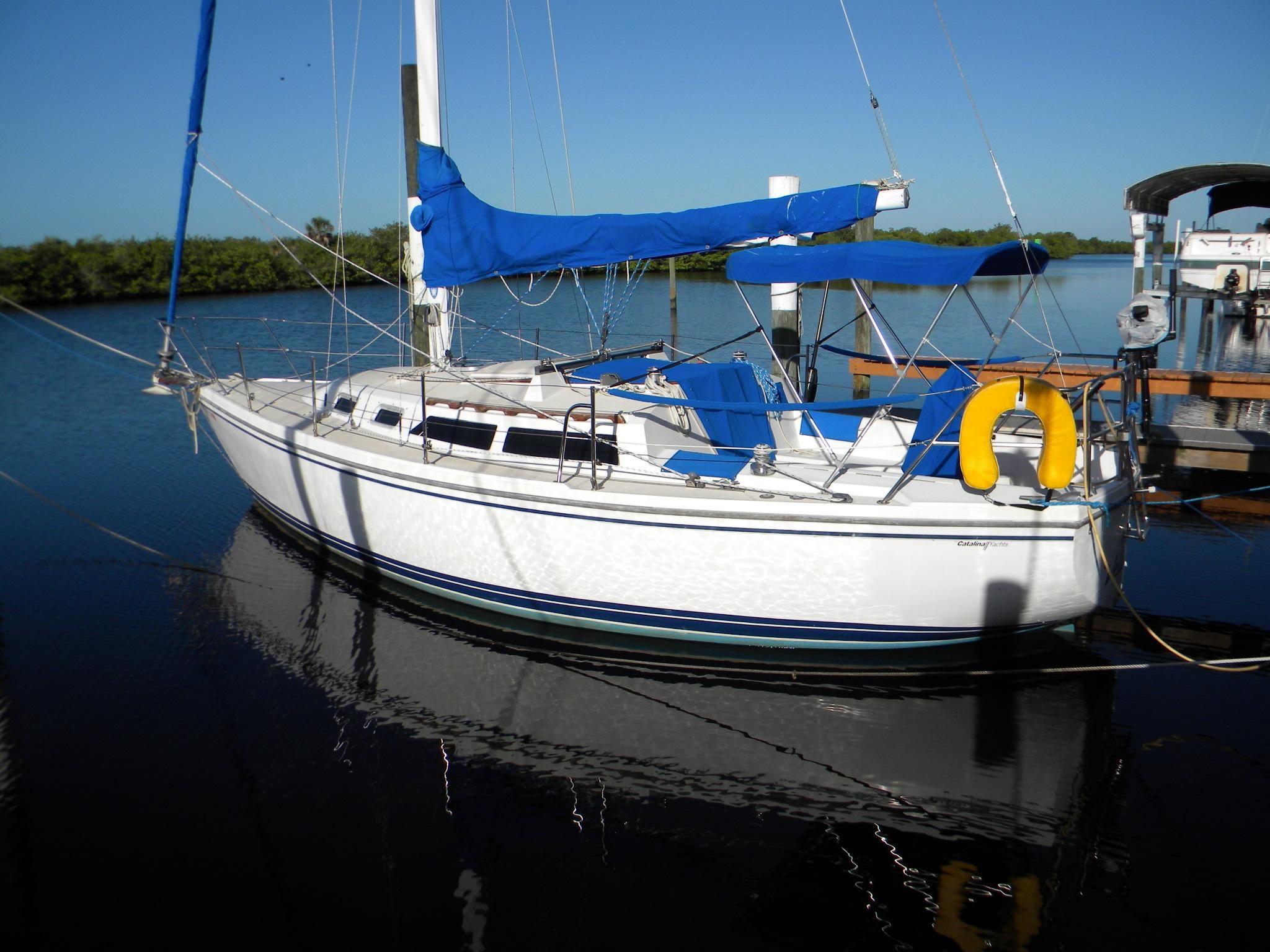Several weeks ago I was preparing a survey of a Catalina 30 for a client and found myself looking for other Catalina 30s for sale to help me establish an approximate value. I quickly found more than 75 for sale and was again reminded of the remarkable popularity of this cruiser/racer.
Quite frankly, I found myself a little surprised that I hadn’t included a review of the Catalina 30 earlier in this series. Better late than never and perhaps even more appropriate now because 1998 celebrates the 25th year of production of the Catalina 30.
Introduced in 1974, as the big brother to and natural step-up from Catalina’s popular 27 footer, the original design remained nearly unchanged for 20 years. In 1994, Catalina introduced the Catalina 30 Mark III with some subtle changes in styling to give the boat a more "Euro" look. The hull was widened slightly from about station seven (70% of the waterline length) aft in order to incorporate a transom boarding platform, and ports were added to the hull sides.
Since 1974, the principal dimensions have remained the same at LOA 29’11", beam 10’10", displacement of 10,200 lbs. and standard draft 5’3". From 1977, shoal draft was offered as an option first with a fin keel drawing 4’4", which was replaced with a winged keel design drawing 3’10" in 1988. The displacement and ballast of shoal draft boats are 100 lbs. greater than the standard draft versions to compensate for the higher center of gravity of the ballast.
By the end of 1997 more than 6,400 Catalina 30s had been built. This is an impressive number, but it becomes even more remarkable when looked at in perspective. Consider that you could combine the production of ten of the most popular 30’ model sailboats built in the US over the last 25 years and still not approach the number of Catalina 30s built. Catalina literature boasts this is the most popular 30’ boat worldwide, a claim that would be hard to argue.
Catalina utilizes a standard lay-up of various types of fiberglass cloth and plastic resin in the construction of the hull. Deck construction includes either balsa wood or plywood sandwiched between fiberglass laminates. The deck is fitted over the hull in a shoe box fashion with a sealant in between. An aluminum rub rail and stainless steel self-tapping screws on about 3" centers secure the deck and hull together. The keel is external lead fastened with stainless steel bolts. The rig is a simple deck-stepped masthead sloop with single upper shrouds and spreaders, double lower shrouds and split backstay.
Some of the more common problems encountered include deteriorated deck cores, compression fatigue at the mast step, failed wooden spreaders, failure of lower chain plate attachments on older model boats, and leaks and separation at the keel to hull joint. There is also sometimes delamination and damage along the vulnerable deck to hull joint caused generally by minor docking incidents over the years.
The engine of the Catalina 30, upgraded from 11 hp to 23 hp, is located midship beneath the dinette seat. This is, in fact, the best location for an engine in terms of weight distribution; however, it complicates the installation of the engine exhaust, leaves the machinery more vulnerable to bilge water and makes sound insulation more difficult. Except for sound insulation, these drawbacks can be overcome with careful maintenance.
The accommodation plan of the Catalina 30 has been so popular that even though it is one of the easiest modifications for a builder to accomplish, the layout has remained unchanged for 25 years. The companionway opening is exceptionally wide, which, when open, makes the cabin appear even bigger than it is. A cockpit dodger or awning is a must with this design for adequate ventilation of the cabin in inclement weather.
A combination of wide beam, good ballast/displacement ratio of .42, and relatively low sail area/displacement ratio of 15.1 makes the Catalina 30 a very stiff boat under sail. This is a feature many sailors find comforting. Other than developing considerable weather helm as she heels, the Catalina 30 doesn’t have any particularly disturbing characteristics under sail. She is likely a bit slower than some of her contemporaries, such as the Pearson 30 or Ericson 30. If you’re planning on racing, you may want to consider the optional tall rig which increases the sail area by 60 sq. ft. and the SA/D to 17.1. This should result in a much more lively and competitive boat.
There are a number of construction and design features of the Catalina 30 that, in my mind, restrict recommended usage to coastal areas, lakes and bays, but then this is true of many production boats in this class. On the other hand, Catalina founder and president Frank Butler has been quoted as saying that the company goal is to provide its customer with "as much boat for the money as we can." Size-for-size and feature-for-feature the Catalina 30 is tough to beat.
Reviewed in the July 1998 Issue of SpinSheet by Jack Hornor





